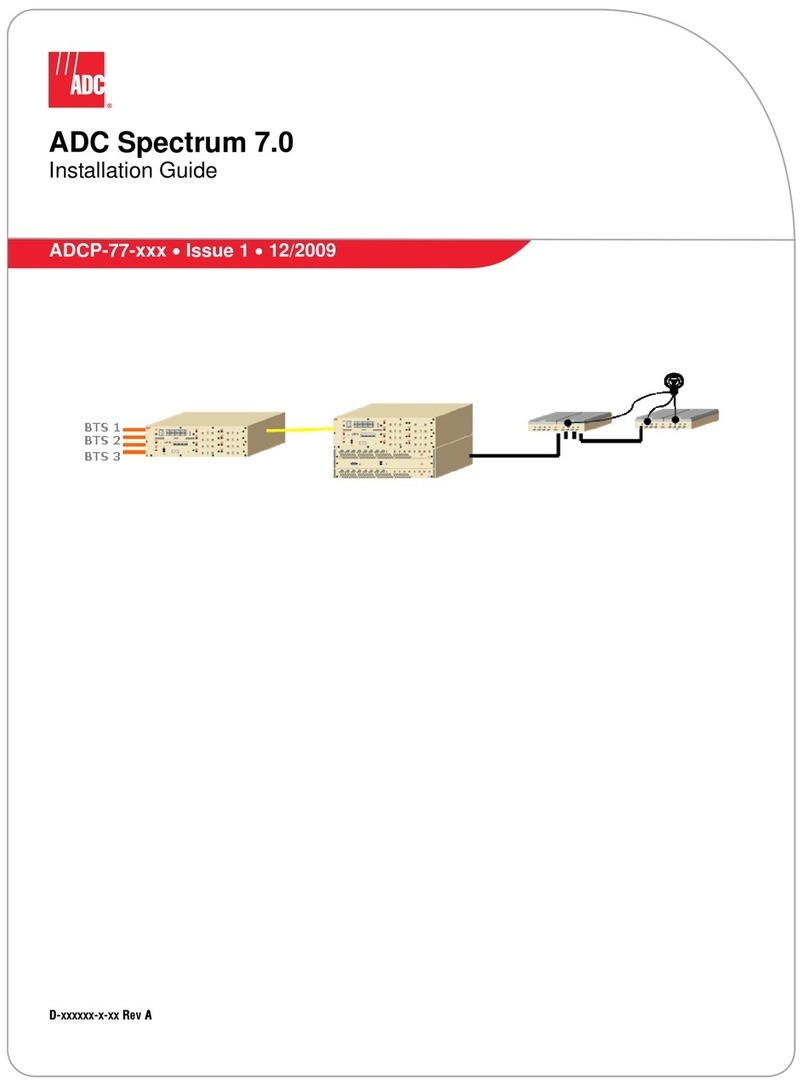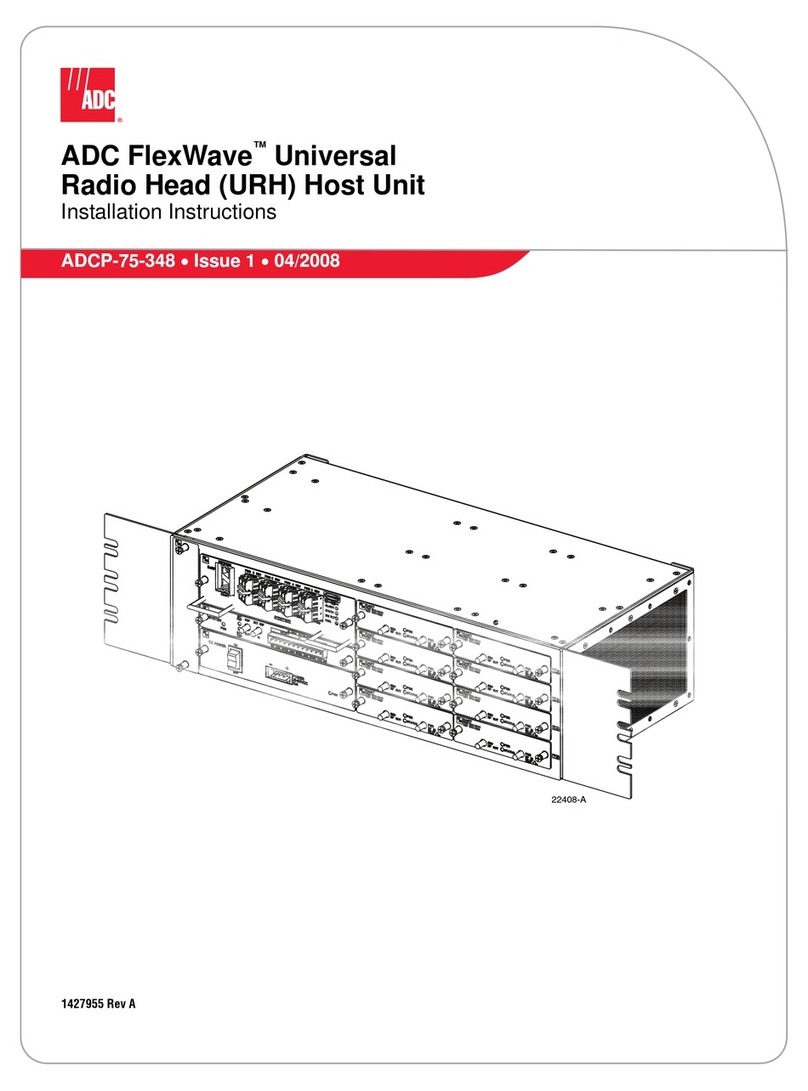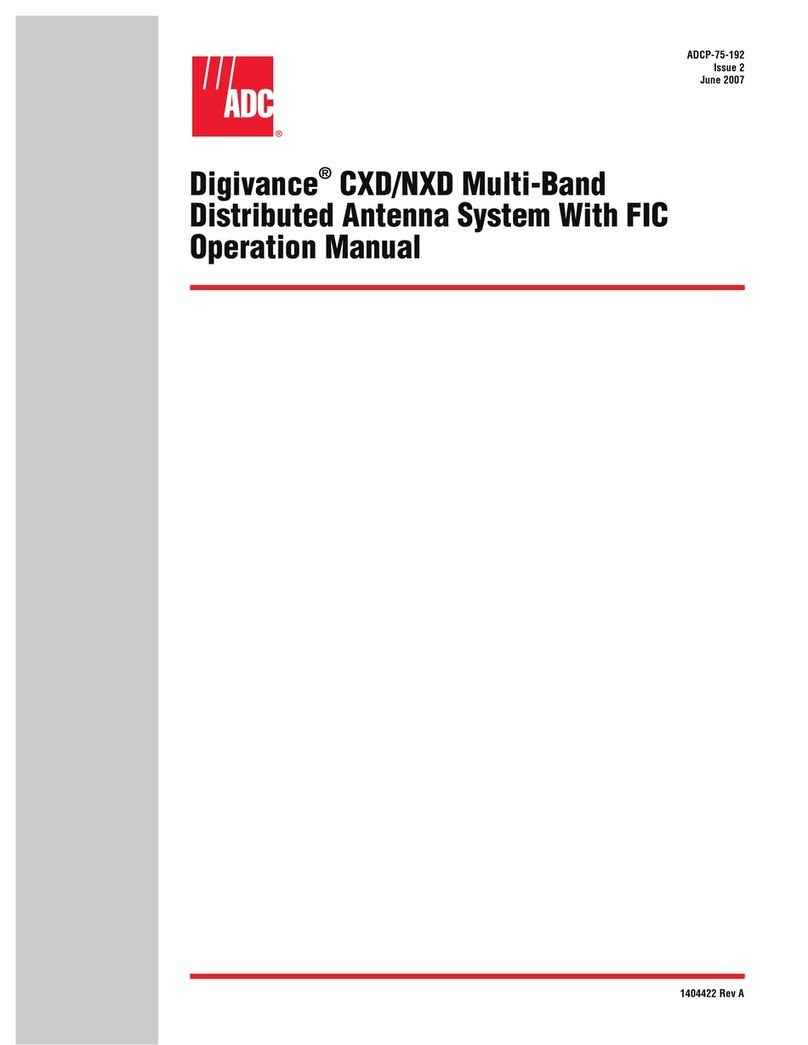
ADCP-75-110 •Issue 2B •July 2001
Page iii
2001,
ADC
Telecommunications,
Inc.
TABLE OF CONTENTS
Content Page
1 SYSTEM FUNCTIONAL OVERVIEW AND UNIT DESCRIPTIONS ........................................ 1
1.1 System Functional Overview ....................................................... 1
1.2 Digital Host Unit Description ....................................................... 3
1.3 Digital Remote Unit Description ..................................................... 7
1.4 Digital Expansion Unit Description ................................................... 9
1.5 Terms and Definitions............................................................12
1.6 Specifications .................................................................13
2 INSTALLATION PLANNING AND SYSTEM DESIGN................................................16
2.1 Base Station Interface Requirements..................................................16
2.2 Locating and Mounting Requirements .................................................18
2.3 Powering Requirements ..........................................................19
2.4 Optical Options and Requirements ...................................................20
2.5 Coaxial Cable Requirements .......................................................20
2.6 System Expansion Planning........................................................20
2.7 DRU Antenna Options ............................................................21
2.8 External Alarm System Reporting Requirements ..........................................23
2.9 Frequency Band Selection Requirements (1900 Mhz) ......................................23
2.10 Maintenance Requirements........................................................24
2.11 System Design Recommendations ...................................................24
3 DIGITAL HOST UNIT INSTALLATION PROCEDURE................................................27
3.1 System Plan Review and Pre-Installation Cable Routing .....................................27
3.2 Tools and Materials .............................................................27
3.3 Unpacking and Inspection .........................................................28
3.4 Frequency Band Selection Procedure (1900 Mhz DHU Only) .................................28
3.5 Mounting Procecure ............................................................29
3.6 Chassis Ground Procedure.........................................................32
3.7 Coaxial Cable Connections ........................................................33
3.8 Ports 1–6 OpticalConnections ......................................................34
3.9 DC Power Connections ...........................................................35
3.10 Exterma; Alarm System Connections ..................................................37
3.11 AC Power Connections ...........................................................38
3.12 Create As-Built Drawing ..........................................................39
4 SYSTEM OPERATION ..................................................................40
4.1 Tools and Materials .............................................................40
4.2 Turn-Up System and Verify Operation .................................................40
4.3 Correct Installation Problems.......................................................43
4.4 Test System Performance .........................................................45
5 SYSTEM MAINTENANCE PROCEDURES ......................................................46
5.1 Tools and Materials .............................................................46
5.2 Fault Detection and Alarm Reporting..................................................46
(continued)






























